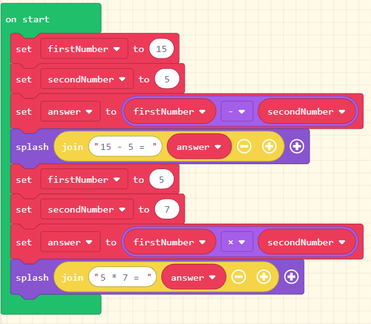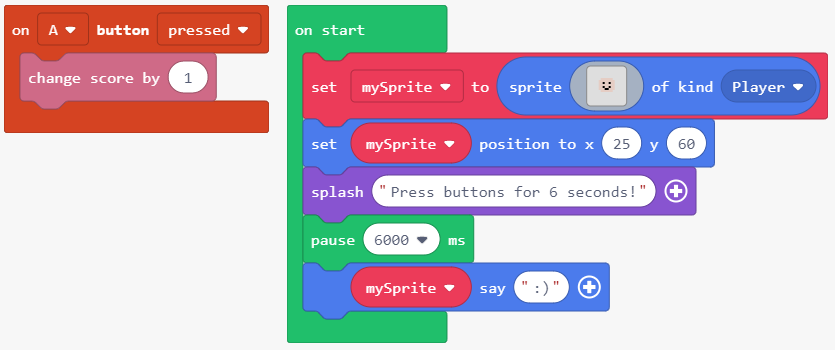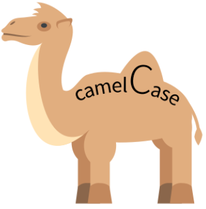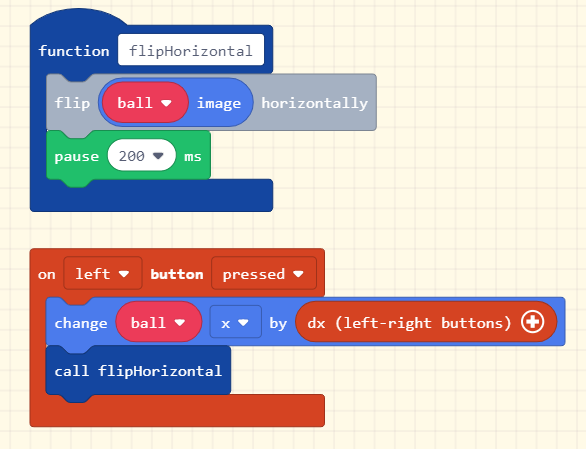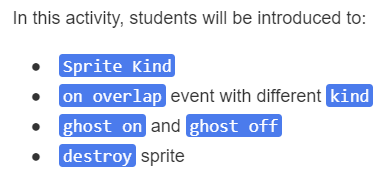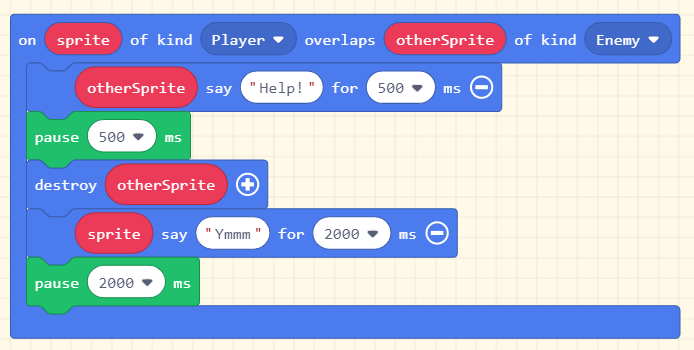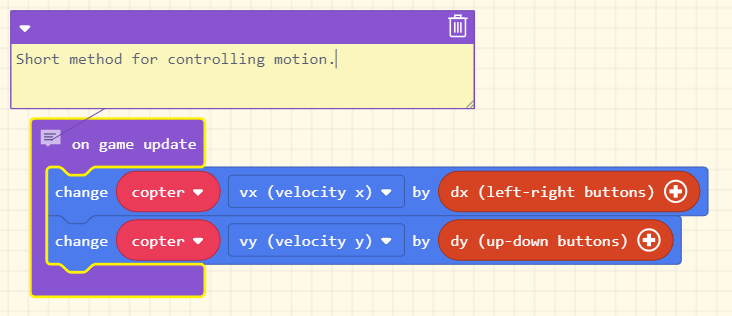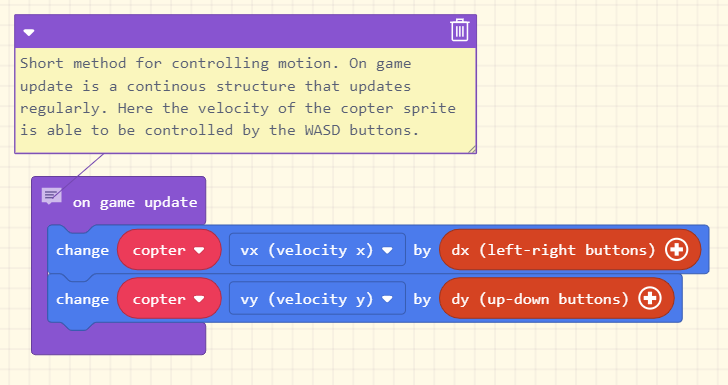SPRITES
A sprite is a computer graphics term for a two-dimensional bitmap that is integrated into a larger scene, most often in a 2D video game.
TASK
Complete the learning and activities on this webpage https://arcade.makecode.com/courses/csintro1/intro/sprites
VARIABLES
|
SETTING A VARIABLE TO A VALUE
You may have noticed that when making a variable, there is usually (almost always) a SET command before the variable does anything. Using a SET command tells the program the variable exists and what type (number, text, or boolean) the variable is.
If you don't SET the variable (let firstNumber = 15; in JavaScript) there will most likely be an error message. The program cannot be run or executed until the message is fixed.
SETTING a variable to a value often happens at the beginning of a group of blocks.
LOWER CAMEL CASE
|
CO-ORDINATE WALKER
|
SPRITE MOTION AND EVENTS
|

